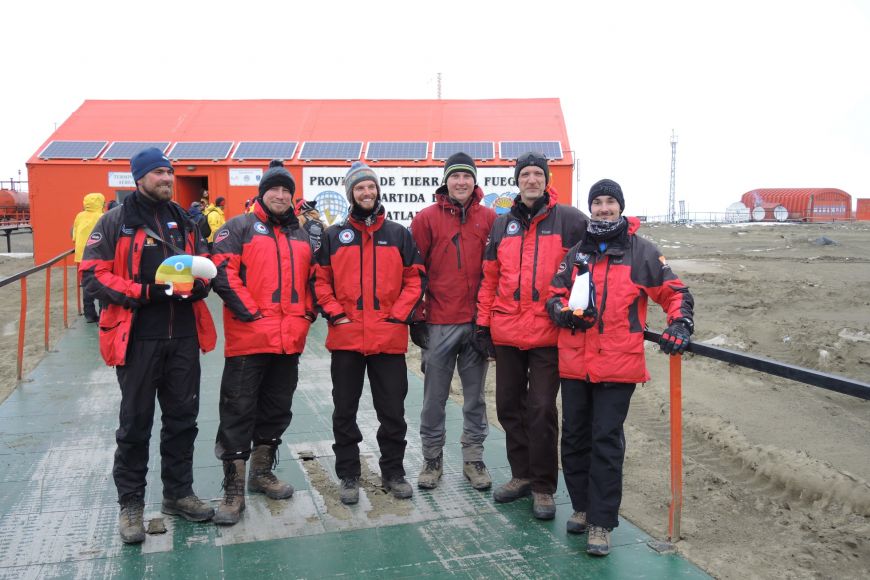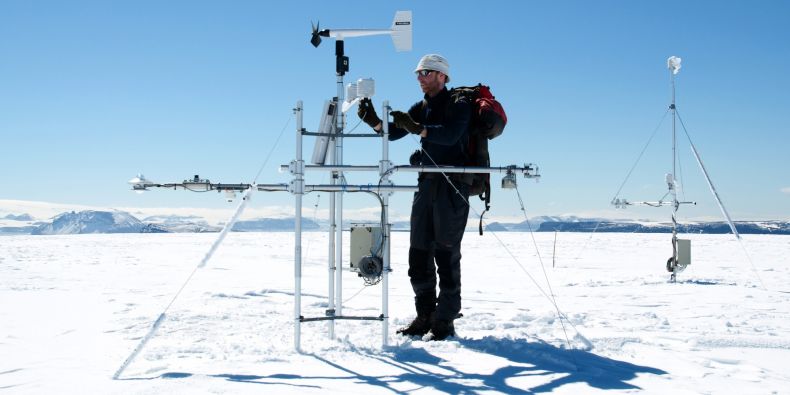The scientific team from the Department of Geography, Faculty of Science at Masaryk University (MU), which is currently studying climate on James Ross Island, have recorded the highest-ever air temperature in Antarctica. The record-breaking temperature is 17.8 °C (60.04 °F) and was recorded in the afternoon of 23 March 2015 in the summit area of the Davies Dome glacier. This is the location of an automatic weather station that monitors weather conditions and the properties of the glacier’s surface. The station is only serviced once a year, which is why the recorded data was only recently retrieved when another expedition arrived at the island.
Such extremely high temperatures are very rare in Antarctica. These are usually recorded in the area of the Antarctic Peninsula, which has witnessed the most dramatic increase in air temperature on earth in the last 50 years. “The second highest air temperature of 17.5 °C (63.5 °F) was recorded a day later at the Argentinian Esperanza station. The new temperature record from James Ross Island is confirmation of the ongoing global climate change, which is related to an increase in weather extremes. These can be reflected in the form of extremely high temperatures in Antarctica, as well as the increased intensity of torrential rains or longer periods of dry weather followed by fires in other parts of the planet,” says climatologist Kamil Láska.
This year’s tenth expedition saw six participants arrive at James Ross Island, where they spent 30 days at the Johann Gregor Mendel Station. The priority tasks for scientists and technicians were to continue with the long-term research into the manifestations of climate change and to service the equipment that records meteorological and glaciological data as well as data related to plant physiology. Downloading the recorded data is a part of these tasks.
“For example, the research into permafrost (permanently frozen soil) changes received a boost this year with some new equipment. We installed electric thermometers into a six and a half metre deep drill hole to obtain information about the vertical temperature profile and how it changes with the increasing depth and over time,” says expedition leader Pavel Kapler about one of this year's activities.
Scientists also measured surface changes and changes in the mass balance of local glaciers and took samples for biological research. They collected lichens, mosses, algae, cyanobacteria, and microbiological samples from seals and penguins. “However, the Argentinian air force shortened the duration of this year’s scientific expedition by more than three weeks, due to their limited logistical capacity. Even though our stay at the station was so much shorter, we were able to complete all the tasks that we had planned,” says Kapler.

The smaller number of participants in this year’s expedition was caused by uncertainties over government research funding. However, the expeditions will be more numerous again in the years to come. Just before the end of last year, the Czech Ministry of Education approved the Czech Polar 2 research programme. The programme budget for 2016–2019 will amount to 74 million Czech crowns and will be shared between Masaryk University and the University of South Bohemia, whose station is located at the Svalbard archipelago.
